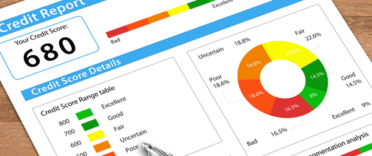 The new pension changes explained
The new pension changes explained
In the Budget 2014 the Chancellor announced new pension rules which brought about significant changes to the way people will be able to access their pension savings. It even means that you can cash in your pension pot. This article brings you everything you need to know about the new pension reforms including those that came into force in April 2015.
Free pension changes factsheet
For a round-up of the new pension rule changes, Hargreaves Lansdown has produced a useful and concise pension rule changes factsheet. It provides full details of the new pension rules and what they mean for you. It is bar far the best summary I've seen on the subject.
Free guide to how the pension rules affect you
The guide tells you all you need to know about how the new pension changes affect you including how you can cash in your pension and the changes still to come
Get the guideA summary of the pension reforms
What are the new pension rules?
From March 27 2014
- Savers whose total pension savings amount to £30,000 are able to take the total amount in cash, this is an increase from the previous limit of £18,000
- Savers with larger amounts can take up to three pensions worth £10,000 each as cash, previously this was two pensions worth £2,000
- Savers who use ‘income drawdown' are able to take larger sums as income
- An individual will need just £12,000 of secured pension income to make unlimited withdrawals through ‘flexible drawdown' (this £12,000 limit was removed from April 2015)
From April 2015
- From age 55 (rising to 57 in 2028) whatever the size a person's defined contribution pension fund they will be able to take 25% tax-free and the remainder how they want, effectively allowing them to cash in their pension.
- Any amount in excess of the 25% tax-free sum will be taxed as income at their marginal rate of income tax in that year rather than the current rate of 55%
- People who continue to want the security of an annuity will still be able to purchase one
- Those that want greater control over their finances can draw down their pension as they see fit
- There will be restrictions on how much you can contribute to a private pension (see above factsheet)
- There are new rules surrounding what happens to your pension when you die. Previously you could have ended up paying as much as 55% as a ‘death tax' from your pension before you could pass it on. This has now been removed meaning that in most instances you will be able to pass your pension completely tax free (again, full details can be found in the downloadable factsheet above).
- To enable people to make the decision that best suits their needs the government is providing funds to provide impartial face-to-face guidance via Citizens Advice and phone based guidance via The Pensions Advisory Service (TPAS)
What happens if I have already bought an annuity?
- Those who have already purchased an annuity will be tied to that contract
- Insurance companies did extend the cooling off period for those who were already in the process of applying for an annuity prior to the Budget 2014 but these have now closed
- There is consultation going on about the possibility of those with annuities being able to cash them in, by selling them to a third party. Nothing concrete has been announced and if this possibility even does arrive it is likely to be after April 2016
If I am considering buying an annuity or drawing from my pension how do the new pension rules affect me?
- A detailed view of the options available to you and how to maximise the income you could receive is available in the retirement options guide.
- Also seek advice from a reputable financial adviser on what would be best for you given the interim arrangements. Some people may be better off taking action before April 2015.
Find out your retirement income options
An excellent guide explaining options when it comes to maximising the income you can take from your pension pot.
Download your copy of the guideWhat are the drawbacks to the new pension rules?
- Although the rules on accessing your pension are more generous regard will need to be paid to the tax implications if your total income, including pension withdrawals, takes you into the higher rate tax band
- Any income will need to be accounted for, and tax liability paid, by completing a tax return at the end of the tax year
- If pension savings are withdrawn to make investments, such as buy-to-let, savers need to be mindful of the risks involved with any investment and their need to access their funds quickly.
- Confusion amongst retirees on the best course of action to take which result in poor decisions that will affect their retirement income





